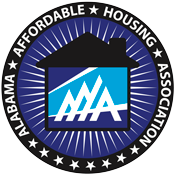From: Affordable Housing Finance 2013
Posted on: January 10, 2013
By Donna Kimura
Sixty-eight public housing authorities (PHAs) have been selected to launch the ambitious Rental Assistance Demonstration (RAD) program. RAD allows PHAs and private owners of certain at-risk, federally assisted properties to convert their current assistance to long-term Sec. 8 contracts. The move positions the owners to be able to leverage millions of dollars in debt and equity to address capital needs and preserve the affordable units.
Public housing across the nation is nearly buckling under $25.6 billion in needed renovations, said HUD Secretary Shaun Donovan in a teleconference call with reporters to announce the awards. Agencies are making tough choices between replacing roofs and repairing broken plumbing. “Every day we wait, those needs get more expensive,” he said.
Participating agencies are also freed from antiquated public housing rules and restrictions that hindered their ability to preserve the housing, according to Donovan. In addition to the PHAs, HUD approved 11 requests from private owners of assisted-housing developments to convert and extend rental assistance contracts. For a list of awards, click here. In all, the commitments announced by Donovan are projected to preserve more than 13,000 public and other HUD-assisted housing for the next 20 years. They are expected to generate more than $650 million in private capital, including roughly $400 million in low-income housing tax credit (LIHTC) equity, to address their capital needs. RAD provides a “catalytic opportunity to reinvestment” in properties, said Preston Prince, executive director of the Fresno Housing Authority in California, one of the RAD winners. Prince said he intends to leverage LIHTCs to raise funds to renovate interiors and add needed new features to his public housing developments. Some of his older three- and four-bedroom apartments have only one bathroom, so the housing authority would be able to add additional bathrooms under a renovation. His agency has also begun talking with the school district about adding learning centers at the developments. The initial round of the program will also generate about 10,000 jobs, estimated Donovan, noting that there is no cost to taxpayers.
He was joined on the news call by Karen Przypyszny, senior vice president, equity placement, of the National Equity Fund, Inc., and Scott Hoekman, senior vice president and chief credit officer of Enterprise Community Investment, Inc. Their organizations syndicate LIHTCs to raise funds for developers. “LIHTC will be an essential tool in making RAD a success,” Hoekman said, noting that it underscores the importance of the housing credit and the need to preserve the LITHC program under potential tax reform efforts.
Without long-term Sec. 8 contracts in place, it would be difficult to attract LIHTC investors and other private funders to the projects. In its next step, HUD will work with the initial participants to finalize their commitments and then work with new applicants who are interested in taking part in the demonstration program. In November 2011, Congress authorized HUD to implement RAD as a budget-neutral demonstration program with two components, allowing for the conversion of assistance for both public housing and HUD-assisted properties that have expiring subsidies. Participation in RAD is voluntary. Nearly all the PHAs that applied in the initial application period were approved.
To read the original article, click here.
